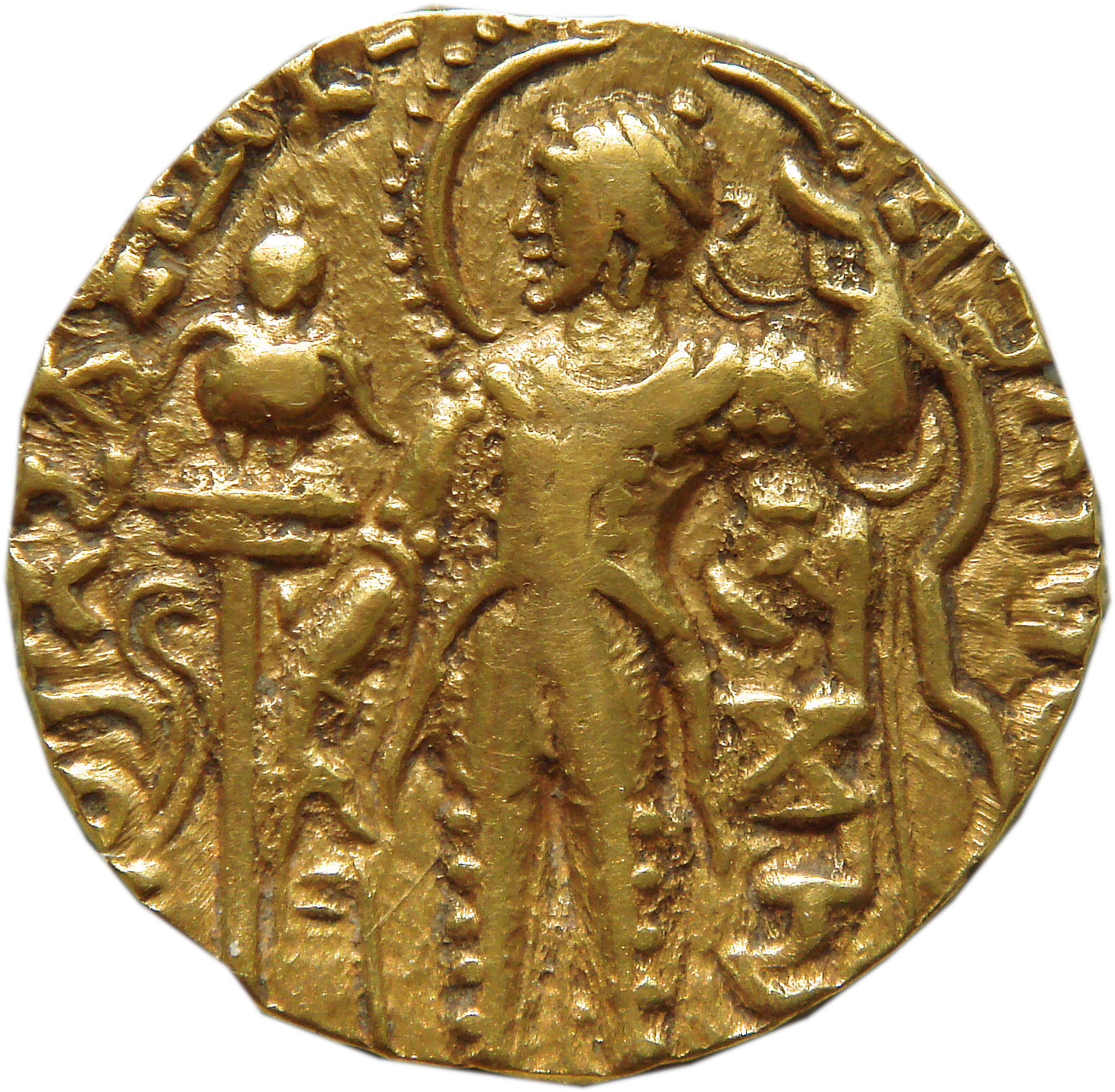
Greatest rulers of Ancient India – SAMUDRAGUPTA
He was the fourth ruler of the great Gupta Empire that cover the vast expanse of the Indian subcontinent. Also named as the Napoleon of India Samudragupta was known for his magnanimous bearing, courage and cultural respect.
Title of maharajadhiraj that was attached to his name was well earned as he uprooted 8 rulers of aryavarta, defeated the 12 great kings of the dakshinapatha but allowed them to rule again under his command, formed alliances with the rulers of Assam, coastal Bengal and Nepal to bring the entire Bharatvarsh under the rule of one monarch that was himself, who performed the great Ashwamedha Yajna.
His Empire extended from the greater Himalayas in the north to river Narmada in the south, from Brahmaputra in the east to the Yamuna in the west.
Being a king like none other in the history ever before, he was a man of culture, a celebrated poet titled ‘Kaviraj’ and musician with a gold coin that was inscribed in his time describing him with a Veena on its surface, furthermore displaying exemplary qualities that have been described by this court poet Harisen in the Prayag prashasti also known as Allahabad pillar inscription, Samdragupta appeared more of a demigod than a human.
Tolerant towards other religions and being on friendly terms with the king of Ceylon, that is present day Sri Lanka he gave him his permission to build the monastery at Bodhgaya for the convenience of Buddhist monks.
With the passage of time it was said that Samudragupta’s who had fought and gained his honour in wars and battles, his body was covered with hundreds of marks caused by the blow of battle Axes, swords, lances, barbed darts, javelins.
ASHOKA THE GREAT
The unloved son of the King Bindusara and the grandson of Chandragupta Maurya, Emperor Ashoka took the Mauryan Empire that was established by his forefathers to great heights.
Known as Devanpriya priyadassi that literally means ‘beloved of the Gods’ in all his inscriptions across the subcontinent and one of the greatest patrons of Buddhism the journey of Ashoka was not simple neither something that can be achieved by common men.
As a prince his father dispatched him to the famous city of Takshashila that was prosperous and geopolitically important to suppress a rebellion according to two Buddhist texts Ashok Sutra and Kunal Sutra. Emperor Bindusara provided Ashoka with fourfold Army comprising cavalry, elephant, chariots and infantry but he refused to provide him with any weapons.
When the prince came to know about this, he declared that weapons might appear before him if he was worthy of being a king and then it is said the Gods and Goddesses later emerged from the earth and provided weapons to their army.
As soon as the prince reached the footholds of Takshashila, the citizens not only welcomed him but also described that the rebellion was not against the king and was only meant to demand justice from some of the evil ministers.
Legends also say that Prince Ashoka was not the Crown Prince and his accession to Throne involve a lot of bloodshed. The Mahavamsa depicts that when Bindusara fell ill Ashoka return to Patliputra from Ujjain and gain control to the capital after his father’s death. His eldest brother was killed and he ascended The Throne.
It is said that the time before Ashoka adopted Buddhism he was brutal with no compassion and was called Chand Ashok. Such descriptions of Evil appear to be fabrications of Buddhist authors who wanted to exaggerate Ashoka’s past wickedness and his compassion and change after the conversion.
According to Ashoka’s major Rock edict 13, Eight years after the accession of Throne Ashoka wanted to conquer Kaling which is situated in modern day Orissa. After the bloodshed in the war broke the Kingís heart he took an oath to never go on a war again and established a peaceful and prosperous era of Indian culture build on the foundations of peace and Dharma.